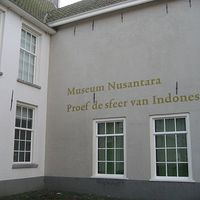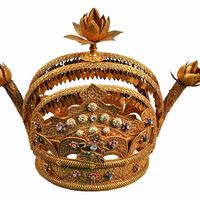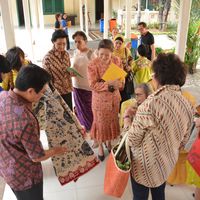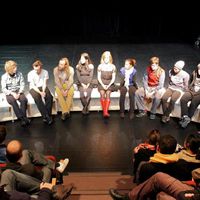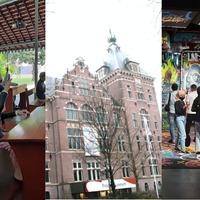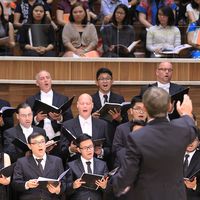National Museum of Indonesia
 [/caption]
[/caption]
Europe in eighteenth Century, widespread intellectual activity resulted in the advancement of scientific knowledge. At that time, many scientific societies were formed. One of these was the Dutch Society of the Sciences (De Hollandsch Maatschappij der Wetenschappen), which was founded in Haarlem in 1752.
At first the society planned to establish a branch in Batavia (Jakarta), but some people thought it was preferable to establish an independent society in Indonesia. Then, on April 24, 1778, they founded a private institution named the Batavian Society for the Arts and Sciences (Bataviaasche Genootschap van Kunsten en Wetenschappen) which had for its motto “for the good of general public” (Ten Nutte van het Gemeen).
The aims of the Society were very wide, that is. Intended to advance research in the arts and sciences, especially in the fields of biology, physics, archeology, literatures, ethnology and history, also published the result of such research. One of the founders of the society, J.C.M. Radermacher, made the greatest contribution. He gave his house at Kalibesar, the trading district in the old part of the city (Jakarta-Kota). Besides, he also donated a number of cultural objects and books. His building and other contributions became the basis of the museum and library of the Society.
During the British Administration in Java (1811-1816), the Lieutnant Governor, Sir Thomas Stamford Raffles, became chairman of the directors. He was interested in all branches of the sciences, but especially in cultural anthropology, history, and archeology. Because the building in Kalibesar had became full of collections, Raffles ordered the construction of a new building to be used as a museum and meeting hall for the “Literary Society” (afterwards called ‘Socièteit de Harmonie’). This building was located at Jalan Majapahit _ 3. Now, in this location, the building of the Secretariat of the State has been erected, near by the President’s Palace. The Society’s collections steadily increased until the Museum at Jalan Majapahit became full house. In 1862, the Dutch-Indies government decided to build a new museum building at Konings-plein West (now Jalan Merdeka Barat). The land covered the area which was then built the Rechts Hogeschool building (it was ever used as Kenpetai headquarters during Japanese Occupation and now Department of Defense).
The new museum was just opened for public in 1868. The museum is well-known among the Indonesian people, especially among the inhabitants of Jakarta. They call it “the Elephant Building/Museum “(Museum Gajah) because of the large bronze statue of an elephant standing in the front yard. It was presented by King Chulalongkorn of Siam (Thailand) when he paid a state visit to the museum in 1871. In 1931, some of the Museum’s collections were shown in a world cultural exhibition in Paris. Unfortunately, a fire in the exhibition hall demolished Indonesia’s exhibition pavilion and destroyed most of the objects. The Museum received some insurance money as compensation on that catastrophe, and the following year these funds were used to build the old Ceramic Room, the Bronze Room and the Treasure Room on the second floor.
Because of the service rendered by the Society in the field of science and in the projects of the government, in 1933 the government conferred the title ‘koninklijke (Royal)’ on its name, so it became Koninklijke Bataviaasch Genootschap van Kunsten en Wetenschappen (the Royal Batavian Society for the Arts and Sciences). The Museum flourished and was very lucky that in the dangerous years of Word War II and the Independence War, it did not suffer any damage. On January 26, 1950, the Koninklijke Bataviaasch Genootschap van Kunsten en Wetenschappen changed its name to Lembaga Kebudajaan Indonesia (Institute of Indonesian Culture). This change was in accord with the conditions of that time, as seen in the new motto “to promote such cultural studies as are useful to increase knowledge concerning the Indonesian archipelago and other countries in the area” Mindful of the importance of the Museum for the people of Indonesia, the Institute of Indonesian Culture presented the Museum to the government of Indonesia on September 17, 1962, and it became the Museum Pusat (Central Museum). Then, based on Decree of Minister of Education and Culture, dated May 28, 1979, Central Museum was changed once more to Museum Nasional (National Museum), managed by government under the Directorate General of Culture. Copyright of VCM
Image courtesy of WikipediaSimilar content
posted on
29 Oct 2015
25 Jun 2015
16 Mar 2011

